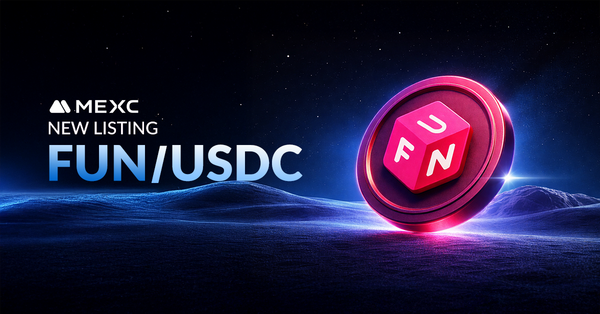A Year in Crypto’s Growth

Humans have always sought better ways to exchange value. From the barter system of old to the online banks of today, value transfer has and always will be an essential part of our daily lives. After all, what’s the point of making money if you can’t spend it?
Bitcoin and its decentralized ledger technology are the latest evolution of money, taking control away from centralized authorities and giving it to the people. Though Bitcoin was created to be a decentralized payments network, today, it’s primarily used as a store of value or speculative investment asset.
However, the underlying blockchain technology has catalyzed hundreds, if not thousands, of new projects in the space, creating some of the most innovative applications and paving the way for modern decentralized finance. These days, blockchain is used in a wide range of industries, including supply chain, healthcare, and the Internet of Things.
From DeFi’s unprecedented growth to Bitcoin’s meteoric rise to a new all-time high, the last year has pushed blockchain and digital assets into the mainstream news cycle. The total value of ETH tokens locked into DeFi platforms has grown from around $700 million in January 2020 to over $60 billion today, and it’s not slowing down.
Institutional investors are finally paying attention to the blockchain industry, with prominent names like Tesla and JPMorgan making moves in the space. As an asset class, cryptocurrencies have also proven themselves resilient even during global crises, dramatically rising in value amid failing national economies.
Institutional Interest
Institutional trade volumes aren’t as high as they could be, but investments from institutions are still clearly creeping in. This will likely lead to higher trade volumes overall, improving liquidity in cryptocurrency markets, and increasing market efficiency. As developments in decentralized finance and non-fungible tokens continue to pop up, institutions will likely continue to hop aboard the block-train.
The cryptocurrency derivatives market has also matured over the last few years, enabling more investors to bet on the market without risking exposure to the volatile asset class. However, if Bitcoin or some other cryptocurrency were to become tradable on a prominent exchange (say, the Nasdaq), this would immediately create waves of positive sentiment in the community.
Traditional exchanges are an infrastructural interface for all kinds of market participants, and the growth and improvement of investment products will depend heavily on how involved they become. With firms like CME Group, CBOE, Bloomberg, and the S&P Dow Jones planning to develop cryptocurrency indices, collaboration with the blockchain space could ensure higher investment efficiency and a smoother functioning market.
Additionally, while no traditional exchange has explicitly listed any cryptocurrencies or pegged indices, the NYSE recently announced that it would be creating ‘first trade NFTs’ for select stocks, representing the first trade conducted after the company’s IPO went live. However, the exchange will not be selling these tokens and is instead gifting them to the respective companies.
Phemex: Turn Down for What?
While traditional exchanges have been struggling to take advantage of the recent crypto bull-run, the biggest benefactors of the increased interest in the space have been cryptocurrency exchanges. Though the DeFi wave brought decentralized exchanges into the spotlight, centralized exchanges are still very much the go-to option for most investors looking for reliable, stable platforms to conduct trades on.
According to Jack Tao, CEO of cryptocurrency exchange Phemex, “DEXs have some unique benefits and advantages, but are also inefficient in many ways, including slower speeds and a lack of customer support.” In fact, compared to the first quarter of 2020, Phemex reported a 465.2% increase in trade volume in 2021, and a 156.9% increase in the number of traders since late-2020 - bringing the total number of registered traders on the platform to over one million.
Last month, Phemex also introduced KYC services on the exchange, making them completely compliant with cryptocurrency regulations. They are also registered with FinCEN (the Financial Crimes Enforcement Network Departments) as a Money Service Business (MSB) to help minimize instances of customer funds being lost to fraud or theft.
The Singapore-based platform launched in November 2019, and led by a team of ex-Morgan Stanley veterans, Phemex quickly rose to one of the top crypto derivatives exchanges worldwide. However, though the exchange is observing the DeFi space closely, there are still many challenges that need to be addressed.
“We are examining all our options,” Tao added. “One potential challenge that we may have the opportunity to address is that of impermanent loss. There are many methods and products to hedge and mitigate risks that we may be able to deliver in the future.” Coinbase, another globally recognized exchange, also reported a similar rise in volumes and users in Q1 this year, and they expect more meaningful growth as the year continues.
Over the last few years, the community has been vocal about how the availability of a digital asset ETF would be incredibly helpful in bringing more mainstream users into the ecosystem. According to studies and surveys, most large fund managers and analysts also consider the lack of a Bitcoin ETF as one of the most significant barriers to entry for traditional investors.
In the United States, the Securities and Exchange Commission (SEC) has either rejected or postponed the approval of many proposals for a Bitcoin ETF over the last few years. However, exchange-traded funds are generally well understood financial instruments, and though the United States is still uncertain, other countries across the globe have seen relative success approving crypto ETFs.
Blockchain has already ventured beyond the scope of most cryptocurrencies, spreading into all kinds of new applications across various industries. Soon, we might even see national governments begin issuing cryptocurrencies in the form of CBDCs (Central Bank Digital Currency), which are state-backed tokens pegged to the value of their fiat currency.
Though Bitcoin is at its all-time high, there are still many more peaks to climb. What was once considered a fad is proving to be humanity’s best solution to a broken centralized financial system. The last decade has been testing for blockchain, but even if the current level of interest is only sustained, the technology has passed this test with flying colors.




